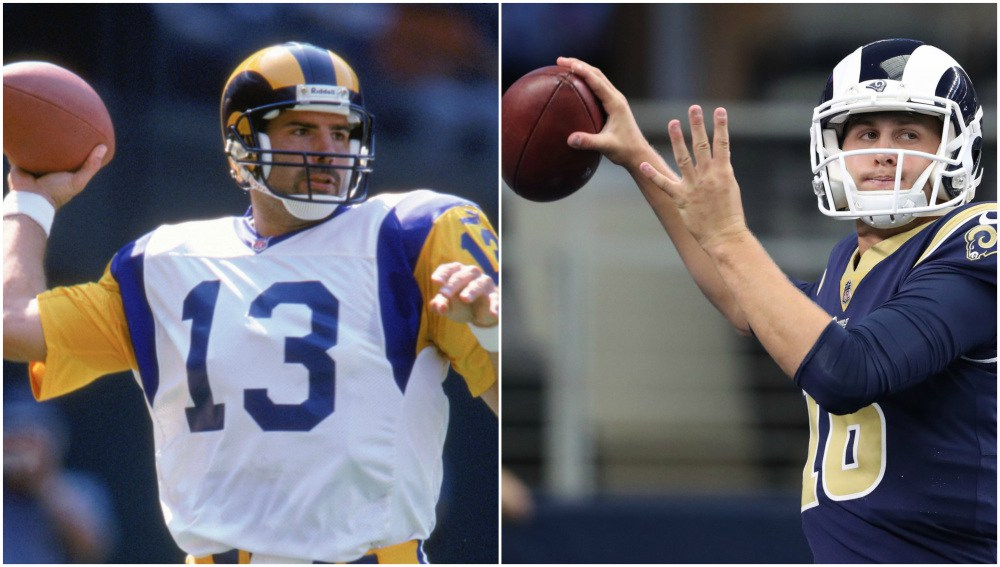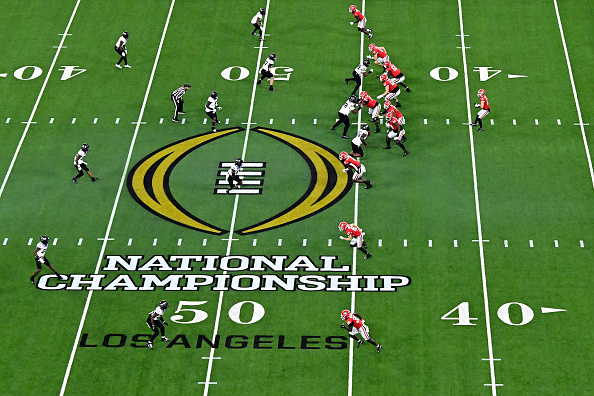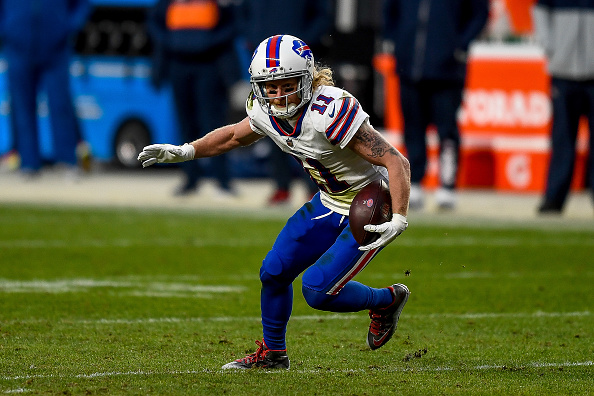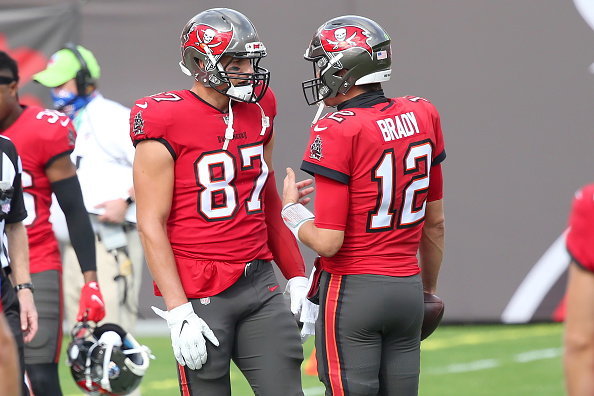The highest-octane attack in pro football once again belongs to those in a helmet with horns.
After moving to Hollywood in 2016, the stage has been set for a Los Angeles Rams franchise like many to hit southern California before them. Is this a reboot? Is this a sequel? This is the Greatest Show on Turf 2.0, and in year two of the McVay-Goff experiment, they’re seeing massive box office returns. Since it’s many years later and in a whole new setting, with an all-new cast of characters, it’s safe to call this a reboot—starting with where they play as one of the biggest differences.
There is nothing more conducive to effective offense than to play indoors. Perfect conditions that leave you only to battle the arena’s air conditioning make for optimal offensive opportunities, with two of the NFL’s top three all-time passing yardage leaders having played the majority of their career in domes—Peyton Manning and Drew Brees.
It still takes talent, coaching, and execution to make the most of these conditions, but they are a distinct advantage. The “Greatest Show on Turf” St. Louis Rams made the most of this advantage at home in the Edward Jones Dome, and in both their Super Bowl appearances in Atlanta and New Orleans. The NFL MVP Quarterback who led them, the recently enshrined Hall of Famer Kurt Warner, struggled in New York with the Giants before making it to a third Super Bowl himself, before playing primarily indoors with the Arizona Cardinals from 2005-09.
The current Rams play at the dated L.A. Coliseum until their permanent home Los Angeles Stadium at Hollywood Park is completed in 2020 and will not have the indoor advantage until then. However, the weather in southern California is rarely inclement. The usual factor in game conditions being some brutally hot days. You think they put up points now? Just wait until McVay can unleash the arsenal inside, with no heat or wind or any other factors.
On the field, the two backstories greatly differ this time around, starting with the coaches. In St. Louis, they were led by steely veteran Dick Vermeil, who left coaching in 1982 after his time with the Eagles, returning to the NFL with the Rams in ’97. He retired from the Rams following a thrilling victory on the last play of the game in Super Bowl 34, handing the keys to capable offensive coordinator Mike Martz. Martz led the Rams from 2000 to 2005 and even got back to the Super Bowl in 2001 but suffered an upset loss to the New England Patriots. Martz’s time ended with a regular season record of 53-32, but a disappointing 3-4 record in the postseason.
The 2018 Rams are led by something of NFL royalty—the youngest head coaching hire in league history—Sean McVay. The wunderkind, famous for his ability to recall a play from any game in full detail—seriously—is the grandson of John McVay an NFL head coach who is considered one of the administrative architects of the Walsh-Seifert San Francisco 49ers dynasty.
His offensive concepts are a throwback to turf times, as are his personnel. The golden-armed passer, the All-Pro running back who can be counted on to be as elusive as he is physical, with an unrivaled ability to be added to a passing game filled with depth and accountable receivers who stretch the field and cause nothing short of headaches for opposing defenses. The role of quarterback between these eras couldn’t have gone to two passers with more different backstories.
Though he played in St. Louis, Warner’s path to canton is more fit for Hollywood. He was the small school quarterback, undrafted and cut at the conclusion of camp. An effective stint in the Arena League led him from working part-time at a grocery store to the NFL Europe’s Amsterdam Admirals, and the eventual shot with the Rams. Starter Trent Green suffered an ACL tear in the preseason, and the rest is history.
Early season MVP favorite Goff took the polar opposite route to the Rams. He was a highly touted prospect who landed a Division I scholarship with Cal-Berkeley. In college, he became the Golden Bears’ next great passer, following the lineage of Aaron Rodgers. Unlike Rodgers, Goff didn’t fall at all in the draft, being chosen first overall by the Rams. Los Angeles surrendered six draft selections to the Tennessee Titans for the guarantee of taking Goff, including a pair of first-round picks.
After struggling under the tutelage of Jeff Fisher, Goff found his perfect match with the young McVay. This coach and quarterback combination is set to wreak havoc in the NFC West for years to come.
Playing the role of Marshall Faulk is the once health troubled Todd Gurley. In spite of his knee history, the Rams still took him tenth overall in the 2015 NFL draft. Much like his predecessor, he can catch, go between the tackles, outside, and even effectively pass block. The perfect versatile option in an offense capable of exploding that Los Angeles hasn’t seen the likes of in their pro sports teams since the Showtime Lakers.
The original Greatest Show had the most vaunted receiver depth of its time with hall of famer candidates in Isaac Bruce and Torry Holt, complemented by secondary options like the sure-handed Az-Zahir Hakim and the slot threat playoff hero Ricky Proehl. Today out of the shotgun, Goff can throw to Brandin Cooks, Robert Woods, or Cooper Kupp, who provide the primary underneath options with his devastating ability to rack up yards after the catch.
The similarities are a bit stunning when you break them down, but to take a step back and see depth chart versus depth chart, it’s as old as football itself—great coaching and great players comprise great teams.
After being eliminated in the first round of their breakout 11-5 year, the Rams are rolling with a 5-0 start this season. Following some contractual issues with superstar defensive lineman Aaron Donald and some health issues in their secondary, there does not seem to be much in the way of them securing another first-round bye for a second consecutive year, having already established a three-game lead in the West.
‘The Greatest Show on Turf: The Sequel’ is upon us and in full effect. Part one ran for about four seasons—be sure to enjoy this one while it lasts.







